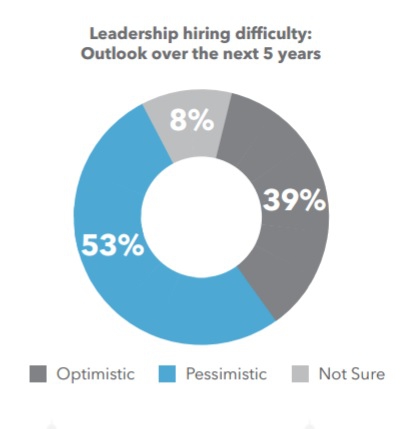78 per cent of HR decision-makers in India say that it’s difficult to fill leadership positions in their organisations.
Leadership hiring or leadership development has been an itching agenda for organisations across the globe for a long time now, but in India it seems the challenge is much bigger. LinkedIn’s 2016 Leadership Talent Challenges in India study revealed that 78 per cent of HR decision-makers in the country feel it’s difficult to fill leadership positions in their organisations.
Furthermore, the study that surveyed 352 HR decision-makers from large companies in the Asia Pacific (APAC) region (97 based in India) also reflects the underlying pessimism, as 53 per cent of them do not see this leadership gap closing in the short term. They are not too positive about the hiring outlook for leadership positions in the near future either.
The difficulties faced in filling up leadership positions are many. However, the one that leads, according to the study, is unrealistic expectations of the senior talent for the compensation and benefits on offer. The report states that 45 per cent respondents in India say that leadership talent has unrealistically high compensation/benefit expectations.
In addition, “Soft skills deficit is also seen as a main reason for the hiring challenge (by 30 per cent), reflecting the complexity of modern leadership roles and the range of skills required to be a successful leader in the APAC region,” the study reveals. The competition for exceptional leadership talent and talent retention pressure has intensified so much that 52 per cent respondents in India prioritise their HR investments in succession planning, followed by leadership development (45 per cent) and employee engagement and retention (44 per cent).
The survey reveals that, “On an average, 43 per cent of HR decision-makers in India are worried about the level of turnover in leadership positions in their organisation.” The APAC average for the same, on the other hand, is 36 per cent. Also, 62 per cent of HR decision-makers in India report difficulty in filling positions with local talent. Remarkably though, this is relatively favourable compared to the APAC average of 72 per cent. The report shows that 56 per cent respondents share that local talent holds less than half the leadership positions in their organisations.
The study reveals the negative impact of these gaps on business, on the whole. A majority of respondents admit seeing an adverse effect on ability to meet current clients’ needs (83 per cent), employee engagement (78 per cent), and ability to attract new clients (73 per cent)—three core areas underpinning current organisational success and future growth. It also impacts collaboration, innovation, compensation/benefits costs and employee turnover, in addition to the aforementioned.
That said, the study puts forth a few strategies to solve the leadership challenge. With succession planning being the most commonly used strategy (by 67 per cent in APAC) and the most successful strategy (for 70 per cent of adopters) to address the leadership talent gap, the report suggests a few tips for building an efficient talent pipeline, some of which are:
Align your leadership talent strategy with your business strategy
Determine which skills, behaviours and roles are needed to successfully execute your business strategy. Your organisation’s success depends on the effectiveness of your leadership pipeline.
Embrace data to identify and broaden your leadership talent strategy
LinkedIn and other tools help organisations with talent pool analyses, providing detailed information about talent in a particular area and/or industry.
Think horizontally as well as vertically when building your leadership pipeline
Organisations tend to focus their efforts and their dollars on the top end of their leadership pipeline. To ensure that your talent and leadership pipeline stays full, leadership development should extend to all levels of the organisation and to your most critical roles.
Provide learning and development the moment it’s needed
Leaders have limited time to devote to learning. To bridge the skills gaps of your current leaders and accelerate the development of future leaders, your leadership development programme should include a blend of approaches and technologies that are available when and where required.




1 Comment
Great read Lipi,
Really great insight into the challenges of HR leaders.